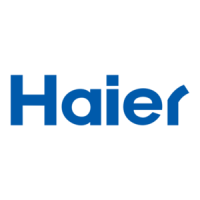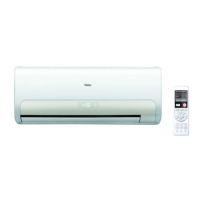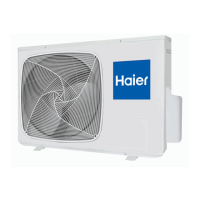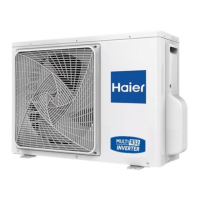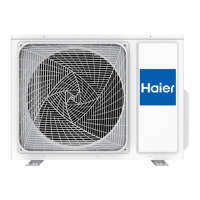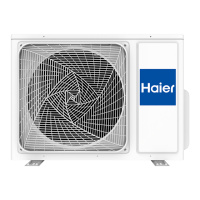Safety Principles
• During product maintenance, favorable ventilation shall be guaranteed at the maintenance site, and the close
of all the doors/windows is not allowed.
• Operation with open fire is not allowed, including welding and smoking. The use of phones is also not
allowed. The user shall be informed that cooking with open fire is not allowed.
• During maintenance in a dry season, when the relative humidity is less than 40%, anti-static measures shall
be taken, including the wearing of cotton clothes and cotton gloves.
• In case the leakage of flammable refrigerant is identified during maintenance, forced ventilation measures
shall be taken immediately, and the source of leak shall be plugged.
• In case the product damaged must be maintained by disassembling the refrigeration system, the product
must be delivered to the maintenance point. Welding of refrigerant pipelines at the user’s site is not allowed.
• During maintenance, in case re-treatment is required due to lack of fittings, the air conditioner shall be reset.
• The refrigeration system must be safely earthed in the whole course of maintenance.
• For the door-to-door service with refrigerant cylinders, the refrigerant charged inside the cylinder cannot
exceed the specified value. The cylinder placed in vehicles or at the installation/maintenance site shall be fixed
perpendicularly and be kept away from heat sources, ignition source, source of radiation and electric appliance.
Maintenance Items
Maintenance Requirements
• Before the refrigeration system is operated, the circulating system shall be cleaned with nitrogen. Afterwards,
the outdoor unit shall be vacuumized, the duration of which cannot be less than 30 minutes. Finally, 1.5~2.0MPa
OFN shall be used for nitrogen flushing (30 seconds~1 minute), to confirm the position requiring treatment.
Maintenance of the refrigeration system is only allowed after the residual gas of flammable refrigerant is removed.
• During the use of refrigerant charging tools, cross contamination of different refrigerants shall be avoided.
The total length (including the refrigerant pipelines) shall be shortened as much as possible, to reduce the residual
of refrigerant inside.
• The cylinders of refrigerant shall be kept upright, and be fixed.
• Before refrigerant charging, the refrigeration system shall be earthed.
• The refrigerant charged shall be of the type and volume specified on the nameplate. Excessive charging is
not allowed.
• After maintenance of the refrigeration system, the system shall be sealed with a safe manner.
• The maintenance in progress shall not damage or lower the original class of safety protection of the system.
Maintenance of Electrical Components
• Partial of the electrical component under maintenance shall be subject to inspection on refrigerant leakage
with dedicated leak detection equipment.
• After the maintenance, the components with safety protection functions cannot be disassembled or removed.
• During the maintenance of sealing elements, before opening the seal cover, the air conditioner shall be
powered off first. When power supply is required, continuous leak detection shall be carried out at the most
dangerous position, to avoid potential risks.
• During maintenance of electrical components, the replacement of enclosures shall not affect the level of
protection.
• After maintenance, it shall be guaranteed that the sealing functions will not be damaged or the sealing
materials will not lose the function of preventing the entry of flammable gas due to aging. The substitute
components shall meet the recommended requirements of the air conditioner manufacturer.
Maintenance of Intrinsically Safe Elements
The intrinsically safe element refers to the components working continuously inside flammable gas without any
risks.
• Before any maintenance, leak detection and inspection on earthing reliability of the air conditioner must be
carried out, to ensure no leakage and reliable earthing.
• In case the allowable voltage and current limit may be surpassed during the service of the air conditioner,
any inductance or capacitance cannot be added in the circuit.
• Only the elements appointed by the air conditioner manufacturer can be used as the parts and components
replaced, or otherwise a fire may be triggered in case of refrigerant leakage.
• For the maintenance not involved in system pipelines, the system pipelines shall be well protected, to ensure
that no leakage will be caused due to maintenance.
• After maintenance and before test run, the air conditioner must be subject to leak detection and inspection on
earthing reliability with leak detection equipment or leak detecting solution. It shall be guaranteed that the startup
inspection is carried out without leakage and under reliable earthing.
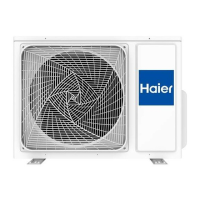
